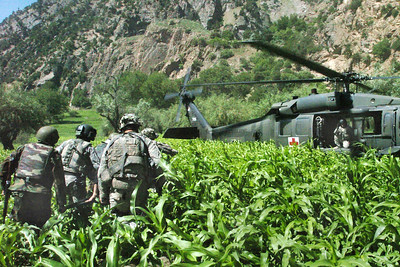The motto of the Military Health System is "Strong to Save." A component of that strength is a commitment to maintaining and improving readiness, which includes learning from the past to improve the future. From a combat casualty care perspective, this requires closely examining data on those wounded or killed in war to evaluate medical policies and practices. Recognizing the need for a comprehensive presentation of outcomes from major U.S. conflicts to inform readiness endeavors, a distinguished team from multiple institutions collected and analyzed monthly U.S. combat casualty data from World War II (WWII), Korea, Vietnam, Operation Enduring Freedom (OEF), and Operation Iraqi Freedom (OIF).
For each of these wars, the authors calculated the case fatality rate (CFR; total deaths divided by total deaths and hospitalized wounded) and the percentages of casualties who were killed in action (%KIA; died before reaching hospital-level care) or died of wounds (%DOW; died after reaching hospital-level care). Among their numerous analyses was a look at broad trends. Significant decreases in the CFR and %KIA were observed from the beginning of WWII to the end of OEF. In contrast, %DOW was significantly higher during OIF/OEF than during WWII or Korea. This may be due to improvements in prehospital care and speed of transporting critically wounded casualties that might have otherwise died before reaching care.
The authors also used the data to study the "peacetime effect" hypothesis: combat mortality is higher than expected at the beginning of a conflict when compared to the end of the previous conflict. They determined that the CFR was higher than expected at time points in the beginning of all conflicts studied, which supports the hypothesis. Overcoming this "peacetime effect" for future conflicts requires a commitment to readiness and striving for continuous evidence-based learning and process improvement. This is of utmost importance when the outcome is Service members' lives saved.
Read more about this study and its implications in a news release from Penn Medicine.

Cannon, J.W., Holena, D.N., Geng, Z., Stewart, I. J., Huang, Y., Yang, W., ... Schwab, C.W. (2020). Comprehensive analysis of combat casualty outcomes in US service members from the beginning of World War II to the end of Operation Enduring Freedom. J Trauma Acute Care Surg, 89(2 Suppl2), S8-S15.
The authors declare no funding source associated with this study.
Your 15 minute session will timeout in approximately 10 minutes.
If you're in the middle of entering information, please close this warning and save your progress (if possible) or finish up your task.
If your session fully times out, you will lose any un-saved work.
Your current Blast Injury Research Program session has expired.
Your next click will take you away from the private area, and you will lose any work you have in-progress.
Please enter your email address, and try again.